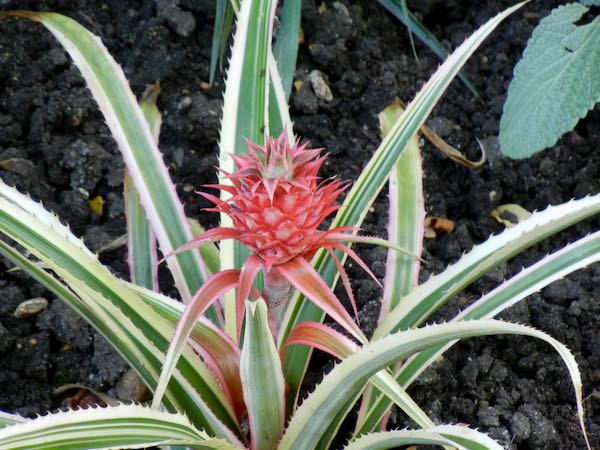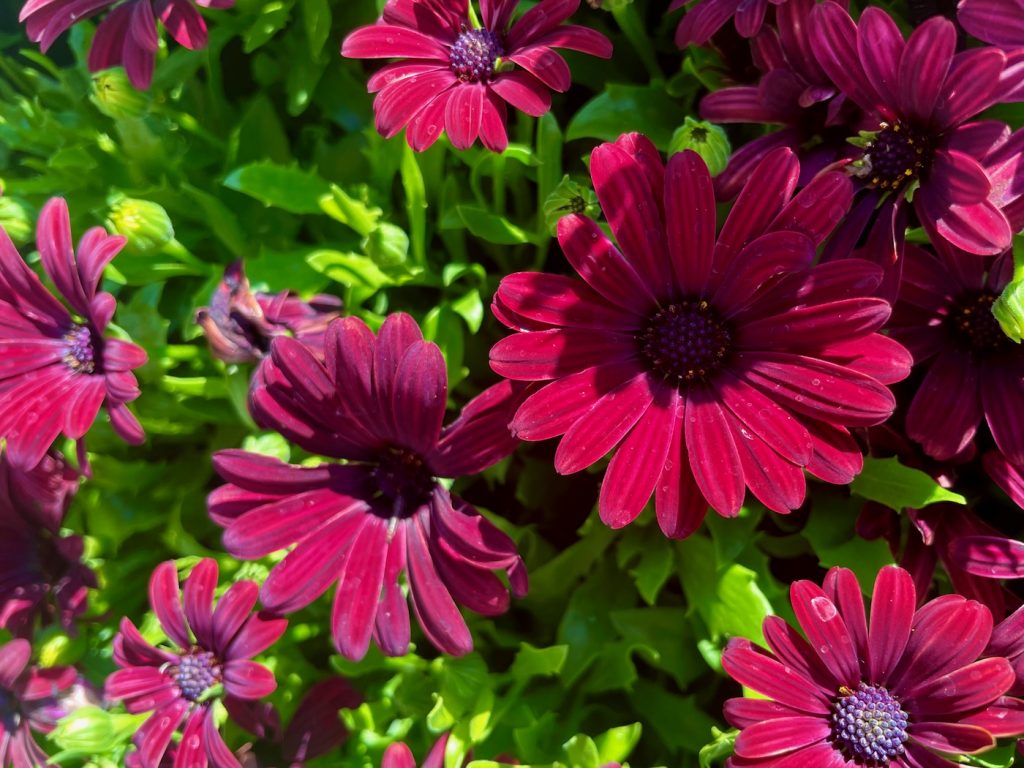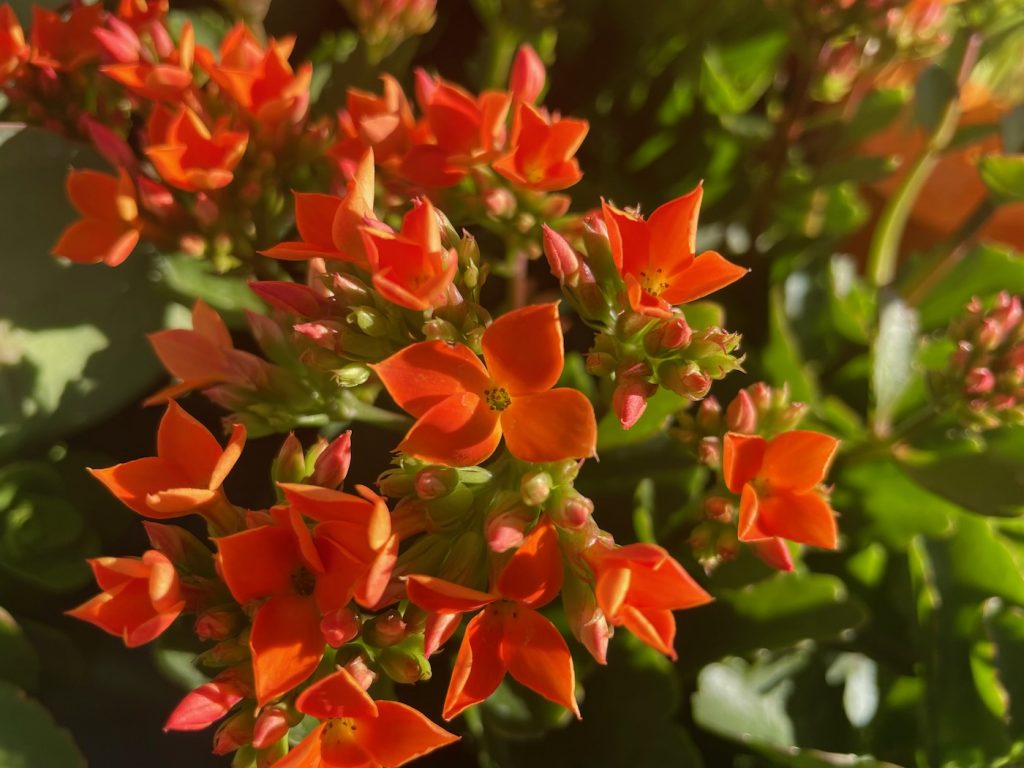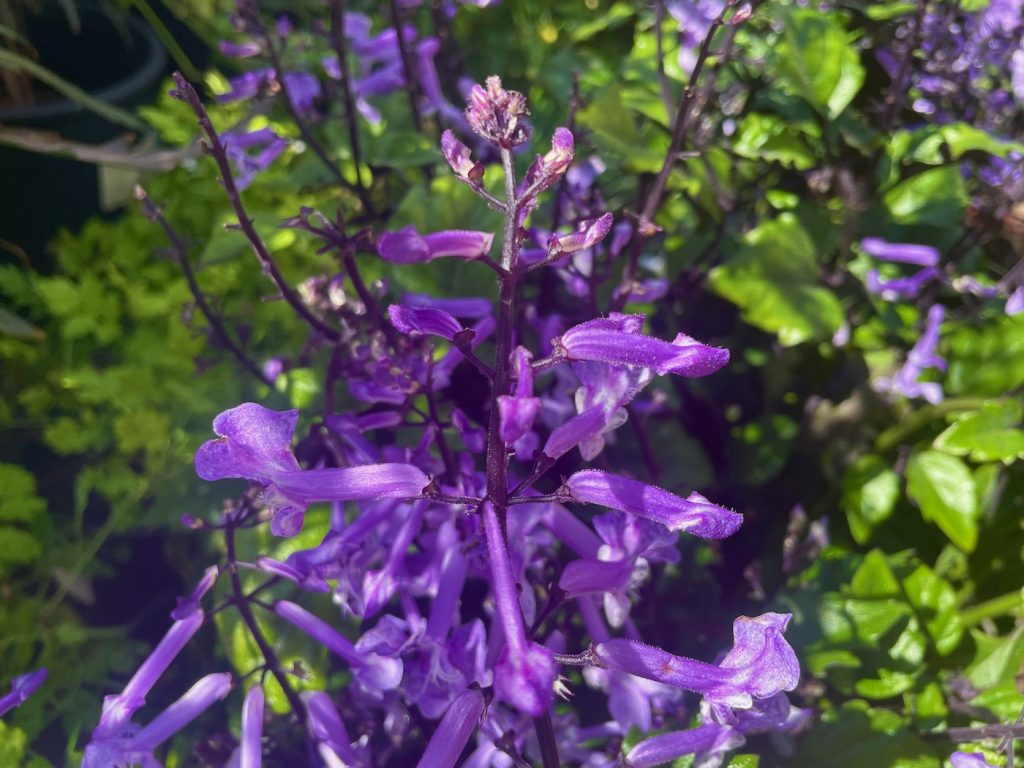Ananas comosus var. variegatus, commonly known as Variegated Pineapple, belongs to the Bromeliaceae family of plants. This unique and visually striking species is native to Brazil and is classified as a short-lived perennial monocot or a short-stemmed bromeliad.
The defining feature of Ananas comosus var. variegatus is its rosette of evergreen, sword-shaped leaves. These leaves exhibit a vibrant green coloration with a distinctive creamy stripe along their edges. The leaves are elongated, growing up to 90cm or 3ft in length, and are adorned with spiny edges, adding to the plant’s ornamental appeal.
During the summer months, Ananas comosus var. variegatus produces exquisite flowers in cone-like clusters. The flowers display captivating shades of purple and red, adding a splash of color to the overall appearance of the plant. After the flowering stage, the plant goes on to bear edible fruit. The fruit resembles a miniature pineapple, but its flavor is not as sweet as that of traditional pineapples. It’s important to note that when grown indoors, it may take several years for the plant to reach the flowering stage.
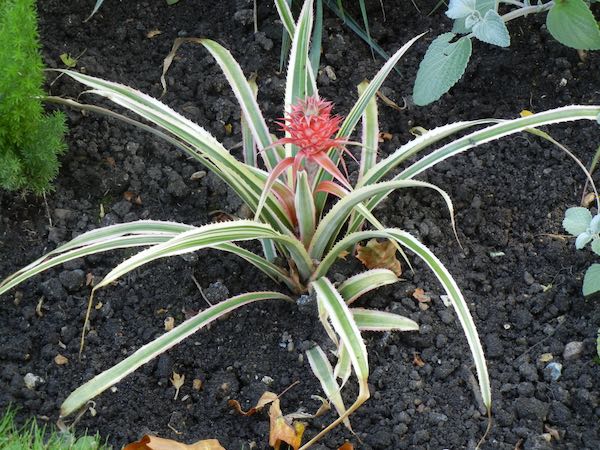
How to grow Ananas comosus var. variegatus:
When cultivating Ananas comosus var. variegatus, it is preferable to provide it with a suitable outdoor environment where it can receive indirect sunlight. The plant thrives in temperatures ranging from 68ºF to 86ºF (20ºC to 30ºC). Planting it in moist, well-drained soil that is slightly acidic will support optimal growth and development. It is crucial to protect the plant from frost and shield the fruit from direct exposure to intense sunlight.
While caring for Ananas comosus var. variegatus, it is important to be mindful of potential issues. Watch out for conditions that can lead to root rot, as well as common pests such as mealybugs, scale insects, thrips, and nematodes. Regular inspections and appropriate pest control measures will help maintain the health of the plant.
Propagation of Ananas comosus var. variegatus can be accomplished through various methods. One option is to use the crown of the fruit, which can be planted to initiate new growth. Additionally, offsets, suckers, and hapas can be separated from the parent plant and cultivated independently to propagate new specimens.
With its visually appealing variegated foliage and the promise of unique fruit, Ananas comosus var. variegatus is a fascinating addition to any garden or indoor collection. By providing the right growing conditions and attentive care, you can enjoy the beauty and intrigue of this distinctive pineapple variety.

Also, read about Bromeliad.

